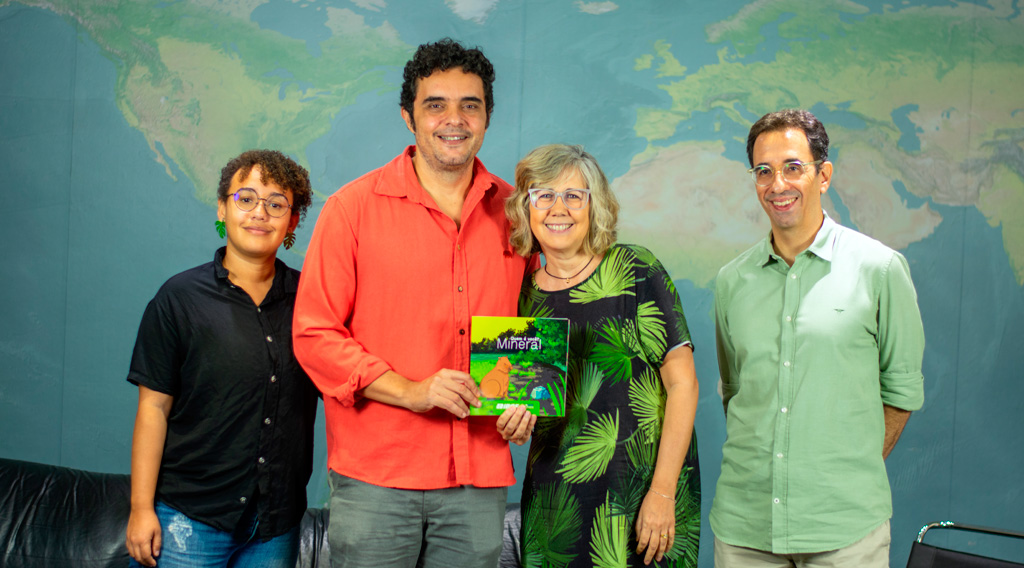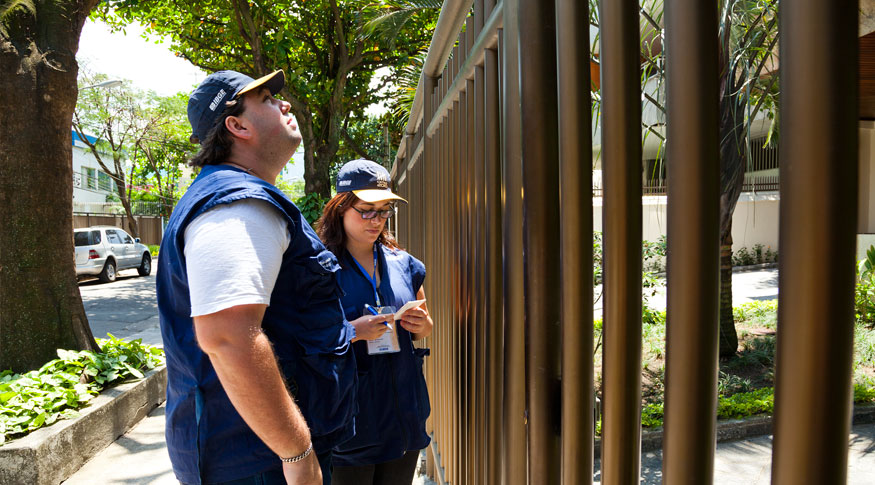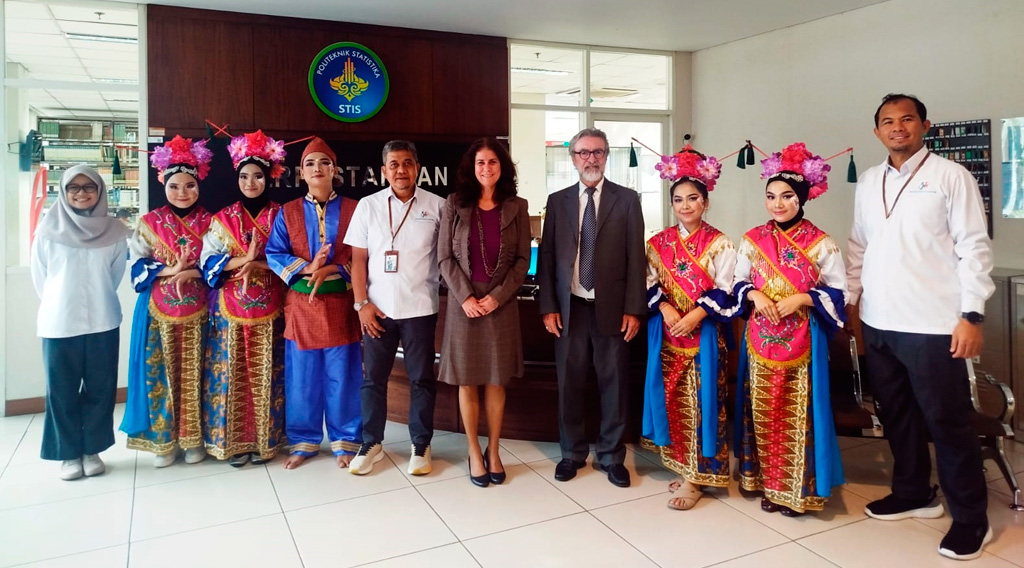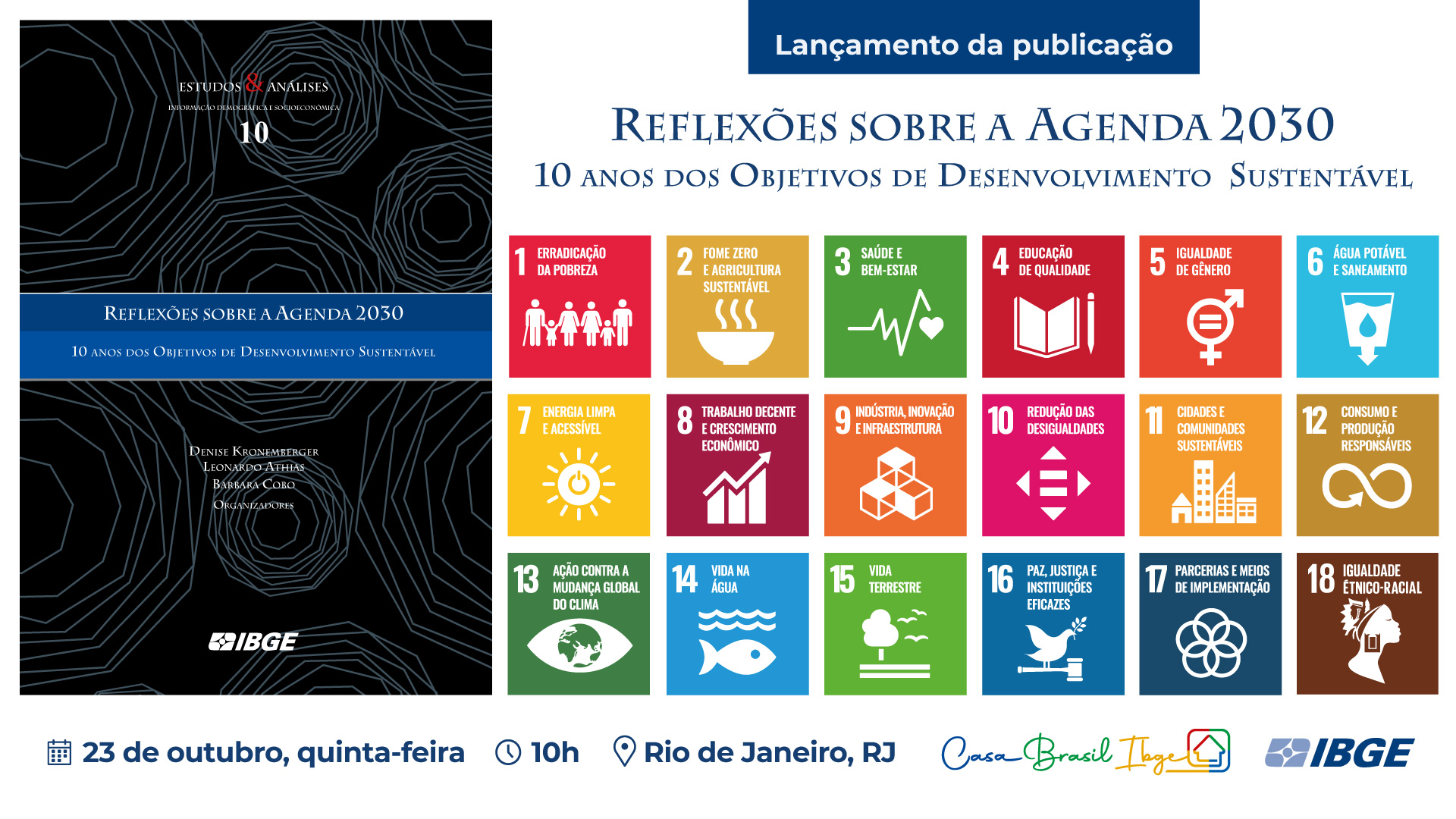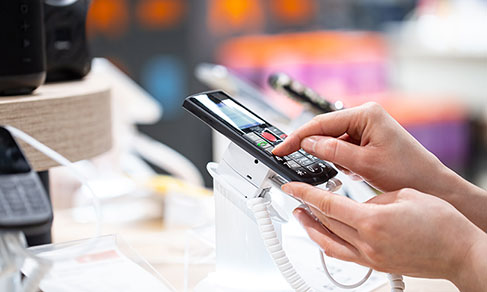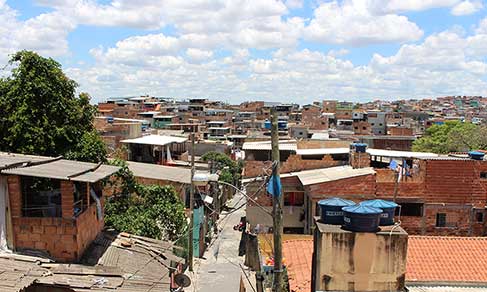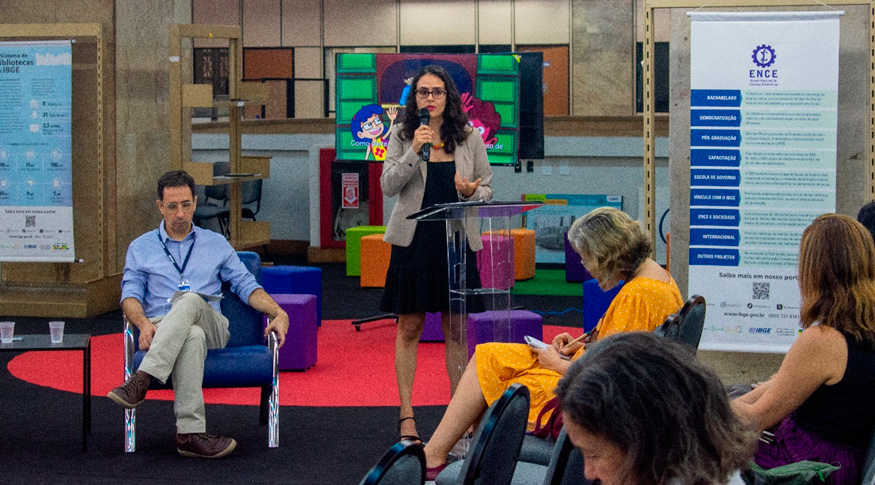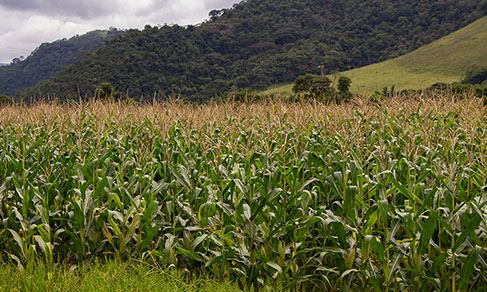Continuous PNAD
In 2023, 88.0% of persons aged 10 years and over used the Internet
August 16, 2024 10h00 AM | Last Updated: August 20, 2024 05h34 PM
Highlights
- The proportion of persons aged 10 years and over who used the Internet in Brazil changed from 87.2% in 2022 to 88.0% in 2023. In 2016, they were 66.1%.
- The percentage of elderly persons (60 years and over) who use the Internet rose from 24.7% in 2016 to 66.0% in 2023. The group expanded 21.2 p.p. between 2019 and 2023 and, compared with 2022, the increase was of 3.9 p.p.
- Among the Major Regions, the Central-West maintained the highest percentage of Internet users (91.4%); Northeast (84.2%) and North (85.3%), the lowest ones.
- In 2023, 97.6% of the students in the private network and 89.1% of the. students in the public network used the Internet, being that the difference between these two groups varied according to the course attended
- Mobile phones (98.8%) were the most used equipment to access the Internet in 2023. It was followed by TV (49.8%), whose access has been continuously increasing since 2016 (11.3%).
- The Internet access through microcomputers retreated from 63.2% in 2016 to 34.2% in 2023. The access through tablets dropped from 16.4% to 7.6%.
- In 2023, 94.6% of users access the Internet to talk through video or voice calls. Other purposes that stood out were: sending or receiving text messages, voice or images through applications other than email (91.1%); watching videos, including programs, series and movies (87.6%) and using social media (83.5%).
- Most people who did not use the Internet in 2023 had not completed primary education (75.5%) or were elderly persons (51.6%). Not knowing how to use it is the most mentioned reason (46.3%).
- In 2023, 87.6% of persons aged 10 years and over had a mobile phone for personal use, a growth of 1.1 p.p. in relation to 2022 (86.5%).

In the Brazilian population estimated at 186.9 million persons aged 10 years and over in 2023, 88.0% (or 164.5 million) used the Internet in the reference period (last three months before the interview), against 87.2% in 2022. In 2016, they were 66.1%. This is shown in the module Information and Communication Technology (ICT) of the Continuous National Household Sample Surve (PNAD), released today (16) by the IBGE. Read the news on information technology in the households as well.
"The percentage is 89.6% in the urban areas and 76.6% in the rural area. Despite the difference, the growth of the Internet use among residents in the rural area has been more intense. It had been 33.9% in the first edition of the survey in 2016, changing to 72.7% in 2022 and hitting 76.6% in 2023, reducing the difference in relation to those in the urban area." highlights Gustavo Geaquinto Fontes, an analyst of the survey.
Concerning sex, 88.7% of women used the Internet in 2023, slightly above the percentage that of men (87.3%). Persons with incomplete higher education (98.3%) and with complete higher education (97.6%) registered the highest percentages of use, whereas the group of persons without education recorded the lowest one (44.4%).
"Concerning color or race, a new indicator in this theme of the survey, 89.5% of persons self-declared white persons used the Internet, against 87.6% of black persons and 86.8% of brown persons. The beginning of the time series in 2016 showed stronger differences: 72.6% of white persons used the Internet against 63.3% of black persons and 60.3% of brown persons," says the analyst of the survey.
The Central-West remains as the region with the highest percentage of Internet users (91.4%), whereas the North (85.3%) and Northeast (84.2%) remained with lowest results. However, the North Region was the region that mostly expanded this indicator in relation to the previous year, with an increase of 2.9 p.p. against 0.8 p.p. in the entire country. The North and Northeast regions grew 15.3 p.p. and 14.2 p.p. between 2019 and 2023, respectively.
Percentage of elderly persons using the Internet reaches 66.0% in 2023
Children and elderly persons were the age groups with the lowest percentage of persons who used the Internet in 2023. The group between 10 and 13 years recorded 84.2%. That percentage grows continuously up to the peak of more than 96.3% of users in the group between 25 and 29 years. Then the proportion of users gradually declines down to 88.0% in the group between 50 and 59 years and then drops to 66.0% among elderly persons (60 years and over).
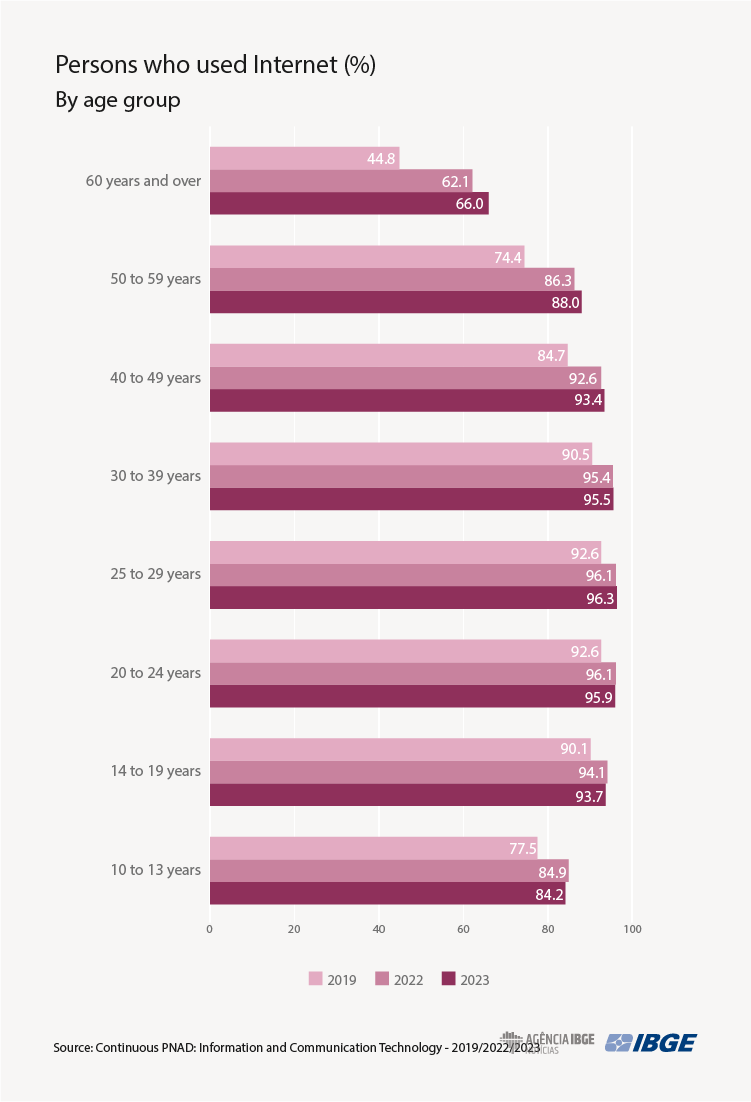
Although the Internet use has been growing in nearly all the groups, the most accelerated expansion was among elderly persons. In 2016, the proportion of elderly persons who used the Internet was 24.7% and increased 21.2 p.p. between 2019 and 2023 in the group aged 60 years and over and 13.6 p.p. in the group aged between 50 and 59 years. In relation to 2022, these groups also reported the greateste expansions in the percentage of Internet users (3.9 p.p. and 1.7 p.p., repsectively.
"The fast expansion of Internet users among the elderly population may be related, among other reasons, to the fact that the Internet has been more and more part of the daily routine of society, expanding its use to different purposes, so these persons may need to fit into the new patterns. On the other hand, youngsters registered a slight retreat, especially between 10 and 13 years of age, with a negative change of 0.7 p.p. in relation to 2022," analyzes Geaquinto.
Students use more the Internet, with differences between private and public networks
In 2023, 91.9% of the students declared to use the Internet, whereas this percentage was 87.1% among non-students, with a slight negative change (0.3 p.p.) in the percentage of students and an advance of 1.2 p.p. among non-students in relation to 2022. While 97.6% of the students in the private network used the Internet in 2023, the percentage was 89.1% among those in the public network. "There are differences in relation to the courses attended, a new indicator in this edition. In the primary education, the difference between the students in the private (93.9%) and public network (84.5%) is 9.4 p.p. The difference drops to 3.3 p.p. in the secondary education. There is virtually no difference between students in higher education and postgraduation, and the access is nearly universal," highlight the analyst.
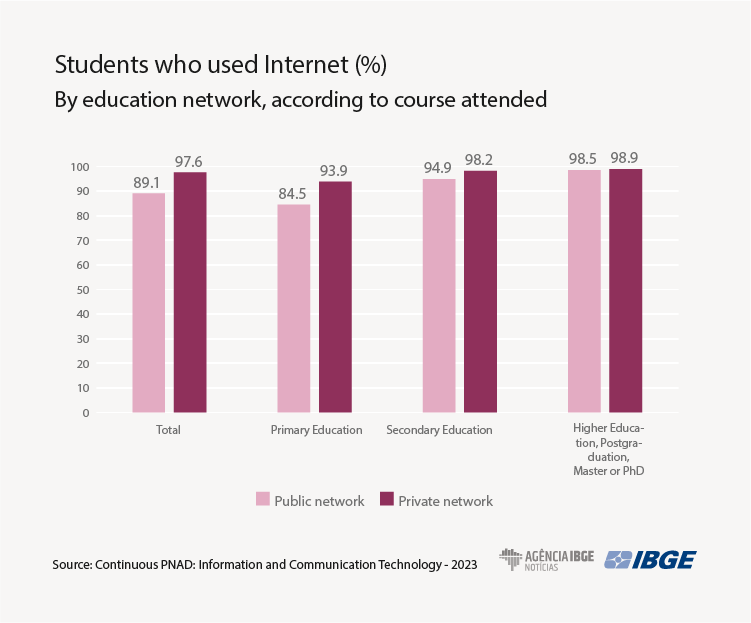
Internet access through microcomputer remains dropping and it is surpassed by TV
The mostly indicated access mean to the Internet was mobile phone (98.8%), followed by TV (49.8%), microcomputer (34.2%) and tablet (7.6%). Between 2022 and 2023, the number of persons who used TV to access the Internet increased (2.3 p.p.), whereas those using microcoumpters decreased (-1.3 p.p.).
"Internet access through microcoumputers declined from 63.2% in 2016 to 46.2% in 2019, down to the lowest value in the time series in 2023 (34.2%). However, the pace of drop of microcomputer users cooled down. In contrast, the use of tablets remained stable in relation to the previous year. On the other hand, the percentage of persons who accessed the Internet through TV continuously improved in the same period: from 11.3% in 2016 to 32.2% in 2019, up to reaching virtually half of users in 2023 (49.8%)," stresses the analyst of the survey.

Among students, the percentage of persons who accessed the Internet in 2023 is higher among those using TVs (55.9%), microcomputers (44.4%) and tablets (11.1%) compared with non-students (with percentages of 48.2%, 31.5% and 6.7%, respectively). Even among students, the use of microcomputers to access the Internet has been dropping over the years. Mobile phones were used by nearly all persons, either students or non-students (97.9% and 99.1%, in this order), with a slightly higher percentage among non-students.
"While 72.1% of the students in the private network accessed the Internet through computers, this percentage was only 29.9% among those in the public network. Nevertheless, students in higher education and postgraduation did not report relevant differences in the use of computers to access the Internet by education network, standing close to 76% both for those in the public and private networks," emphasizes Geaquinto.
In 2023, access to banks grows and Internet use to read newspapers, books and magazines drops
The Continuous PNAD investigates the frequency in which persons use the Internet since 2022. In 2023, 94.3% used it every day; 2.3% used it nearly every day (five or six days per week); 2.7%, from one to four times per week; and only 0.6% used it less than once a week.
The percentage of persons who accessed the Internet to talk through either voice or video calls remained as the major purpose, hitting 94.6% in 2023, a change of 0.2 p.p. in relation to 2022 and an expansion of 3.2 p.p. in relation to 2019. The second most usual purpose was either sending or receiving images, voice or text messages through different email applications, a drop both in relation to 2022 (-0.9 p.p.) and in relation to 2019 (-4.7 p.p.).
Other purposes pointed out by more than half of Internet users were: watching videos, including programs, series and movies (87.6%); reading newpapaers, new, books or magazines through the Internet (69.0%); accessing banks and other financial institutions (66.7%); and sending or receiving emails (60.5%).
"The expansion in the use of the Internet to access banks or other financial institutions (6.6 p.p.) and the drop in the use to read newspapers, news, books or magazines (-3.3 p.p.) stands out. Concerning the activitiy of sending or receiving emails (electronic mail), surveyed since 2016, the dropping trens that has been noticed since the beginning of the time series was interrupted in 2023, with a growth of 1.1 p.p. over 2022. The use of the Internet to watch videos, including programs, series and movies, grew between 2016 and 2021, when it hit 89.1% of the users, showing slight consecutive drops in 2022 and 2023 (-0.8 p.p. and -0.7 p.p., respectively)," highlights Geaquinto.
Free access in public education institutions is made by 10.2% of Internet users
From 2022 onwards, PNAD began to also investigate free access to the Internet (Wi-Fi) in some public places. Among the places investigated, 10.2% of persons stated to have accessed the free service in public education establishments (like schools and universities) or public libraries, against 8.9% in 2022. The use in public health establishments (like health centers and hospitals) was indicated by 6.4% of users, whereas 6.6% of persons accessed it in public plazas and parks (percentages of 5.2% and 5.5%, respectively, in 2022).
The proportion of students who used the free access to the Internet in public education establishments or public libraries was 27.1% in 2023, 2.9 p.p. higher than that noticed in 2022 (24.2%). Considering the education network, it is estimated that 30.5% of the students of the public network who used the Internet in the reference period accessed the free service in public schools, universities or libraries, a higher percentagethan that noticed for those in the private network (20.6%). In 2022, the percentages were 26.7% and 19.0%, respectively.
Elderly persons and those less educated are the majority among those who did not use the Internet
Among 186.9 million persons aged 10 years and over, 12.0% did not use the Internet in the reference period of the last three months. It is estimated that this group comprised 75.5% of uneducated persons or with incomplete primary education, and that 51.6% were elderly persons aged 60 years and over. Comprising 22.4 million persons, this contingent had the main reason for not accessing the internet in that period investigated. The two mostly indicated reasons by these persons were not knowing how to use the Internet (46.3%) and lack of need (25.9%).
Ownership of mobile phone changes from 77.4% to 87.6% of persons aged 10 years and over between 2016 and 2023
In 2023, it is estimated that 163.8 million persons aged 10 years and over had mobile phones for personal use in Brazil, which corresponded to 87.6% of the population within this age range. While 89.6% of persons who lived in urban areas had a mobile phone for personal use, this percentage was 73.7% among persons in rural areas.
A continuous expansion of the ownership of mobile phones is noticed in the period involved in the survey, increasing from 77.4% of the population aged 10 years and over in 2016 to 81.4% in 2019, reaching 87.6% in 2023. A change of 1.1 p.p. was noticed in relation to 2022, when the percentage of persons who owned such devices was 86.5%.
More about the survey
Since 2016, the module of Information and Communication Technology (ICT) of the Continuous National Household Sample Survey (Continuous PNAD) analyzes the access to the Internet and TV and ownership of mobile phones for personal use, geographically detailed for Brazil, Major Regions and Federation Units. For more information, please access the complete publication and the support material.



